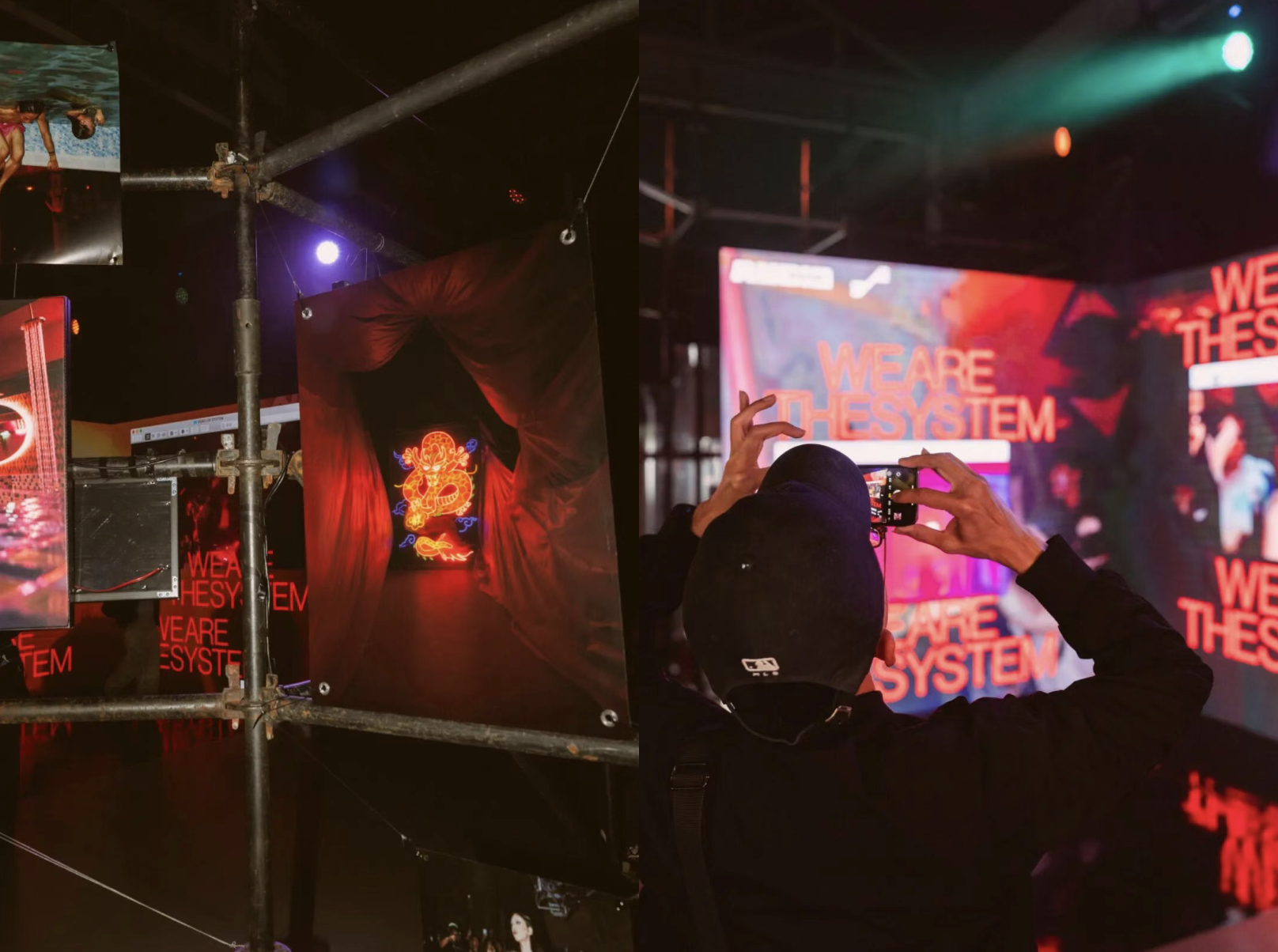Sinogrime — the prefix for China-related things (Sino) plus the name of the genre of electronic music and MC’ing that arose out of London in the early 2000s (grime) — was a term reportedly coined by DJ, producer and Hyperdub label boss Kode9 with the release of his Sinogrime Minimix in 2005. Though the term was born as a sort of made-up genre tag, it has since grown in popularity and cultural impact.
The term “Sinogrime” essentially refers to music made by early Grime forerunners like Jammer and Wiley, who sampled ostensibly “Chinese” sounds in some of their productions. A good example among several is the Jammer beat “Chinaman”, which sampled a tiny section of the music from 1993 Jet Li film Tai Chi Master:
Sinogrime wasn’t — and isn’t — a genre per se, but more of a phenomenon within the genre of Grime music. It’s received a fair amount of focus already, but there are still some interesting points that can be made about the musical phenomenon that was Sinogrime in the early-mid 2000s in London. Grime’s transposition into China and the subsequent effect of the genre in the country, while less discussed, is also a cultural wave that has gathered force in recent years.
Sinogrime’s London Roots
Starting at the beginning, though: it’s notable just how pervasive the “Sinogrime” sound was in 2002 and 2003, right at the very beginning of Grime. Why was Wiley making a beat called “Shanghai” in 2003?
UK-born DJ/producer and Shanghai scene stalwart Swimful (who also produced his own remix of the above Wiley track) offers one explanation: “Around the late ’90s there were a lot of hugely popular Japanese games like Shenmue and the Final Fantasy series that made heavy use of pentatonic scales, which generally sound more Chinese, and heptatonic scales, which generally sound more Japanese.” Young kids sitting in front of these games for hours on end were inevitably exposed to these sounds.
Another explanation is related to the likely prevalence of old Chinese martial arts films and video games making use of seemingly “Sino” sounds that surrounded young people at the time.
Other, more theoretical, explanations are also available. A key sonic and cultural forerunner to Grime was Garage, but this genre didn’t reflect the poverty-driven realities of many people in the underground dance scene at the time. Thus, the sparse, depressing rawness of Grime made by young producers in East London was, in part, looking outwards from their vantage points to other, imagined worlds — China being one.
Under this argument, the concept operates on similar terms to Edward Said’s concept of Orientalism, with “the East” functioning as a kind of reductionist screen onto which writers, artists, and musicians could project exotic Otherness, and have what they like reflected back at them. In the case of Sinogrime, this is perhaps an imagined Communist bleakness that suited the sonic palette Grime producers felt was suitable for them at that time, or “an exotic and mysterious vibe of advanced ancient civilizations, warlords and martial arts, which is apt given Grime’s template of MCs trading lyrical blows over beats,” as Swimful suggests.
(Interesting aside: the two key East London breeding grounds for Grime were Bow and Limehouse. The latter was the site of one of the earliest Chinatowns in London and the UK, with still-existing streets such as Mandarin Street, Ming Street and Pekin Street in the E14 postcode reminders of this past. A handful of Chinese restaurants remain in the area, although it’s surely too much of a stretch to link this to early Sinogrime experimentation.)
Another interesting Sinogrime-related anecdote comes in the form of Mr Wong. Wong was the only early Grime artist with Chinese heritage. His lyric, “It’s that Chinese boy,” and instrumentals made with Jammer, like “Chinkrasta”, attest to the use of his second-generation Chinese identity within the framework of Grime music.
The pervasiveness of the Sinogrime sonic palette is attested to by its continued existence in Grime: producers like Slackk, JT the Goon and Blackdown continue to use these sounds in their music to build specific atmospheres:
But how has Grime — or even Sinogrime — traveled from London to China? What did producers on the other side of the world do with this music born in East London?
How Sinogrime Came to China
By at least 2009, music fans in China, especially on music-oriented social network Douban, had begun taking notice of Sinogrime. A number of important producers on China’s underground electronic music scene, including Scintii and Howie Lee, had spent time in London, but their music was not explicitly connected to Grime. Though the genre counts many fans in China — and can be said to have exerted an influence — Grime never took off or coalesced around a community in the same way that it has in Japan.
Perhaps this is a good thing — maybe some of the idiosyncratic innovations that have taken shape in Chinese underground electronic music wouldn’t have happened if a Grime “scene” had cemented. China-based producers such as Swimful, Naaah (now in the US, but formerly in Shanghai), Dirty K, and Zean have at different points pushed what might be termed a more archetypal Grime sound.
Shanghai’s Zean acknowledges some direct influence, saying: “Sinogrime stuff did influence me at some point I think, like the arpeggio melodies from JT The Goon or Murlo’s music, or the drum patterns from Wiley’s tunes.” DJs like Alta and his club night/label Push & Pull (founded with Naaah), as well as Beijing DJ and promoter Puzzy Stack, were doing something similar. Puzzy Stack remembers “beginning to promote Grime parties around 2015, after being influenced by recommendations from friends, especially those in Shanghai.”
Some significant Grime MCs have also toured China, including P Money and Killa P, with a handful more DJs and rappers also passing through.
So Where are the Chinese Grime MCs?
MC’ing has always been noticeably absent from Chinese takes on Grime. One problem might be that the talk of violence, sex and drug use that characterized much of Grime — at least, in its early days — would not work within China’s strict censorship system. Or perhaps Grime just hasn’t grown big enough in its short life yet — if it ever truly steps out of the underground, like hip hop eventually did, maybe the genre would see greater traction in China.
Producers like Zean have nevertheless worked successfully in China with MCs from Japan and England. Puzzy Stack’s explanation for China’s dearth of Grime MCs is more pragmatic. “The rapid, 140BPM intensity of Grime makes it difficult for Chinese MCs, who have to focus on careful pronunciation,” he says, which explains “the relative popularity of slower, more sparse hip hop beats among Chinese MCs.”
Related:
 Watch: Chinese Rapper After Journey Explores London’s Grime SceneArticle Oct 13, 2018
Watch: Chinese Rapper After Journey Explores London’s Grime SceneArticle Oct 13, 2018
Does Sinogrime Have a Future?
Thinking about the reception of this bastardized sound in China, the sometimes-questionable, almost parodic use of “Sino” sounds coupled with semi-racist song titles, not surprisingly, doesn’t seem to have possessed the same allure for producers already in China. Ultimately, Grime has been and will remain influential to a handful of Chinese musicians, but (as for many producers globally) only with a diversified remit and its traditional styles warped, messed and experimented with.
Moreover, Sinogrime and Grime’s inability to find a surer footing in China can be viewed as a good thing. As Swimful puts it: “I think partly with the ages of crowds, people are far less likely to be tribal about the genres they like, so crews and labels that put forward a more pluralistic vision of electronic music appeal more to listeners. If you look at Genome and SVBKVLT as examples, they’re both run by people who love Grime and have done a lot to promote it here, but they’ve won plaudits for portraying Chinese music in all its forms.”
—
Cover photo: Shanghai producer Swimful (courtesy the artist)
You might also like:
 Beijing Label S!LK Wants to Bring “Drastic” Sounds to the Club (and the Internet)Article Nov 20, 2018
Beijing Label S!LK Wants to Bring “Drastic” Sounds to the Club (and the Internet)Article Nov 20, 2018
 Yin: SCINTII & Dirty K Remix Berlin Producer mobilegirlArticle May 25, 2018
Yin: SCINTII & Dirty K Remix Berlin Producer mobilegirlArticle May 25, 2018
















